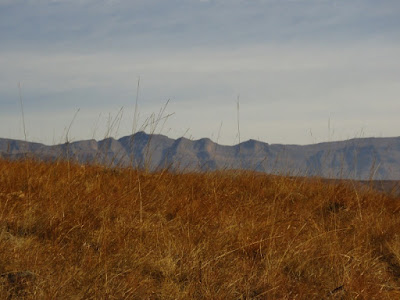“THE ADRENALINE AND STRESS OF AN ADVENTURE ARE BETTER THAN A THOUSAND PEACEFUL DAYS.”
Paulo Coelho
THE DRAKENSBERG
ROOF OF SOUTH AFRICA &
MOTHER OF RIVERS
This watershed has a notable atmosphere. Surrounded by clouds, often with a summer thunderstorm exploding below the level of its summit, it seems to be a small world of its own, lost in space. Jagged peaks menace it on all sides. Snow blankets it thickly in the winter, while the summer months see its bogs decorated with many flowering plants, which flourish happily in alpine conditions of incessant rain, hail, snow, and powerful winds.
The umLambonja River draws its waters from at least 100 separate springs. The foothill country through which it flows is richly grassed, and attracted from earliest times vast herds of antelope. These antelope in turn, attracted Bushmen hunters who found this area to be something of a paradise. Not only was there plentiful food supply, but the many tributary valleys of the river were well wooded, and erosion had carved out from the sandstone below the basalt a magnificent series of caves and rock shelters. In one valley alone, that of the Ndidima River, there were 17 of these natural rock shelters. On their walls the Bushmen left nearly 4000 separate rock paintings, most of them highly colorful and many reaching a superb standard of artistry. These are probably the most beautiful prehistoric art galleries so far found in any caves. One cave alone, Sebayeni, has 1146 of these remarkable pictures.
The area drained by the umLambonja River ends at one of the most dominant of the Drakensberg summits, the 3182 m high Cathkin Peak, and it is a overpowering presence in the range. This great mountain acts as one of the cornerstones of the Drakensberg, swinging the range around more to the south and, in the process, being well exposed itself. A difficult “E” grade, and a frustrating mountain to climb, it stands near a ridge of jagged-looking peaks, including one weird looking height known as Ntunja (the eye) with a great hole bored by nature immediately beneath its summit. It glares out over the surrounding countryside like a one-eyed giant.
Behind Cathkin Peak stands a sinister looking peak known from its shape as the Monk’s Cowl. It towers 3234 m high and has an evil reputation amongst climbers. It rears up steep and dark against the main wall, which here reaches a height of 3377 m on the summit of what is known as Champagne Castle.
For the next 45 km, the Drakensberg maintains a steady height of around 3150 m. There are no gaps or easy passes to the summit. The impression of a precipitous island is complete, with an undulating sea of grass-covered foothills sweeping in upon it from the east. Two rivers, with their complex of tributaries, have their sources along these slopes, the quaintly named Njesuthi (well-fed dog), and the Bushman’s River. The name of Njesuthi particularly suits this rushing torrent. Fed by numerous tributaries, it gains in size and power, bounds happily down rapids and waterfalls and eventually joins the Tugela as though off to hunt with a pack of hounds.
The Bushman’s River has its source on top of the escarpment, immediately behind the 3314 m high mountain known as Giants Castle. There is a superstition common along the Drakensberg, with several variants. It is said that pointing at the mountain implies disrespect, and bad weather will inevitably follow. Another mountain near Cathedral Peak is taboo to women. If they point at it, they will surely marry somebody living on its slopes. The residents on the slopes are said to be unprepossessing.
Giant’s Castle looks down on the Giant’s Castle Game Reserve, a wilderness area preserved as a home for herds of mountain eland, and other antelope. The valley of the Bushman’s River was also a home of Bushman, and their caves are preserved, having many galleries of paintings on the rock walls.
Giant’s Castle, like Cathkin Peak, is particularly prominent, for it acts as a cornerstone, swinging the escarpment sharply south-westwards and leaving itself exposed in the process. It is a great gatherer of clouds, and many violent storms have their origins around its cliff faces.
South of Giant’s Castle there looms another high wall of basalt. Rivers such as the Lotheni and the Mkhomazi tumble down from the summit in lovely sequences of cascades and falls. There is an atmosphere of solitude and wildness, with crisp air and crystal-clear water.
We as hikers, explorers,
and adventurers have the absolute duty to respect and protect our Wildernesses.
Nobody else will do it for us. Take ownership!
The End.
Safe Hiking.
References and Acknowledgements
From the book: Southern Africa – Land of Beauty and Splendour – Readers Digest
Photos: ©Willem Pelser
Compiled by: Willem Pelser








No comments:
Post a Comment